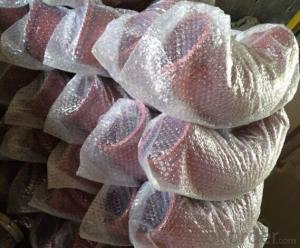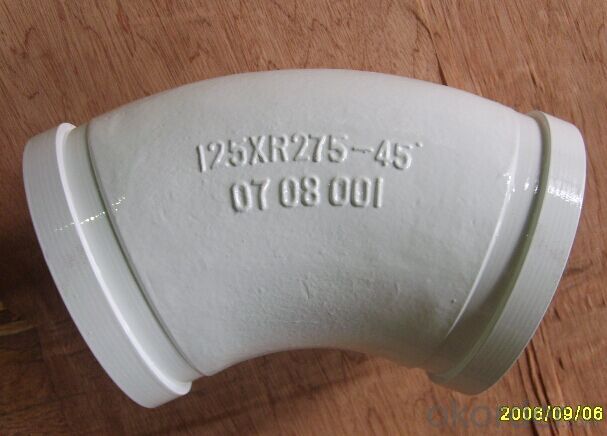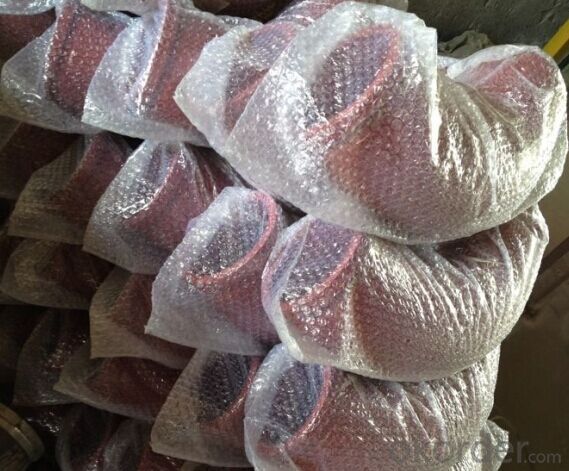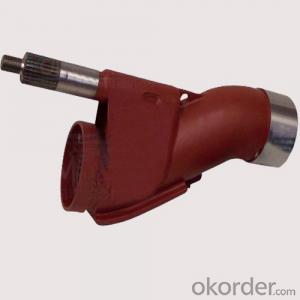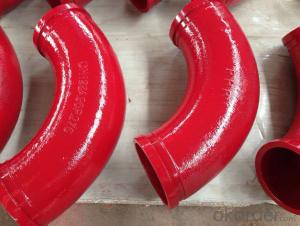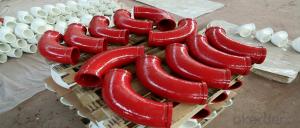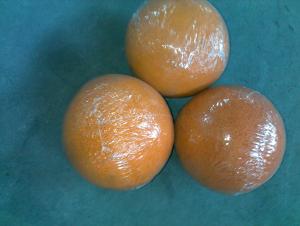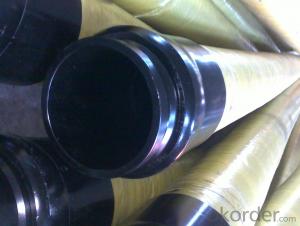CONCRETE DELIVERY ELBOW PM TYPE 20DEG R275 DN125
- Loading Port:
- Tianjin
- Payment Terms:
- TT OR LC
- Min Order Qty:
- 100 pc
- Supply Capability:
- 10000 pc/month
OKorder Service Pledge
OKorder Financial Service
You Might Also Like
concrete pump elbow table
Wear-resistant Single or Double Concrete Pump Elbow | |||||||
Type | Singe Elbow | Double Elbow | |||||
Model | DN125 | DN150 | DN175 | DN125 | |||
Material | Casting Steel ,ST52 | Inside | 40Cr | Outside | |||
Size | R275*90° | R275*90°+110 | 36° | F2000 | R275*90° | R275*90°+110 | |
R275*45° | R275*90°+211 | R400*30° | A3000 | R275*45° | R275*90°+211 | ||
R275*25° | R275*90°+411 | R400*45° | 471B | R275*25° | R275*90°+411 | ||
R275*20° | R275*90°+424 | R400*30° | 571B | R275*20° | R275*90°+424 | ||
R275*15° | R275*45°+170 | R488*90° | A1000 | R275*15° | R275*45°+170 | ||
R180*90° | R275*45°+310 | R500*90 | C1000 | R180*90° | R275*45°+310 | ||
R232*60° | R275*45°+310 | R280*90° | B2000 | R232*60° | R275*45°+310 | ||
R240*36° | 20°Lengthen | R240*36° | 20°Lengthen | ||||
R240*30° | 25°+740 | R240*30° | 25°+740 | ||||
R240*15° | 40°Zoomlion | R240*15° | 40°Zoomlion | ||||
R385*29° | R385*29° | ||||||
R315*33° | R315*33° | ||||||
Technic | Forged | ||||||
Average life | 25,000cubic | 50,000cubic | |||||
Appliciation | Used in concrete transport in construction work | ||||||
1.product profile:The double layer concrete pump elbow is developed by ourselves through new
technology and process.
2.characteristic:the inner layer of this concrete pump elbow undergoes heat treatment,and then the rigitiry can reach 62-65HRC.
3.characteristic:the outer layer of the concrete pump elbow possess good toughness properties
to protect the inner layer,so the security of the elbow is improved.
4.life:the experiment done abroad shows that the life of our concrete pump elbow can reach 35000-50000cbm,got the customers' praise
5.Beside the double layer concrete pump elbow,we produce all kinds of concrete pump parts,
straight pipe hose flange coupling and so on.
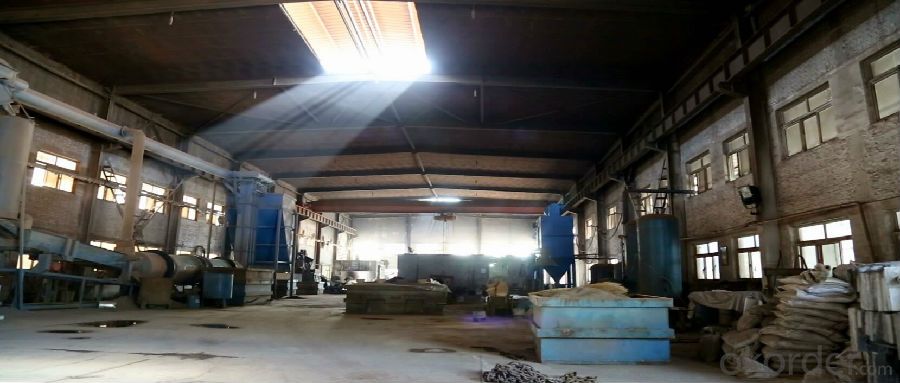
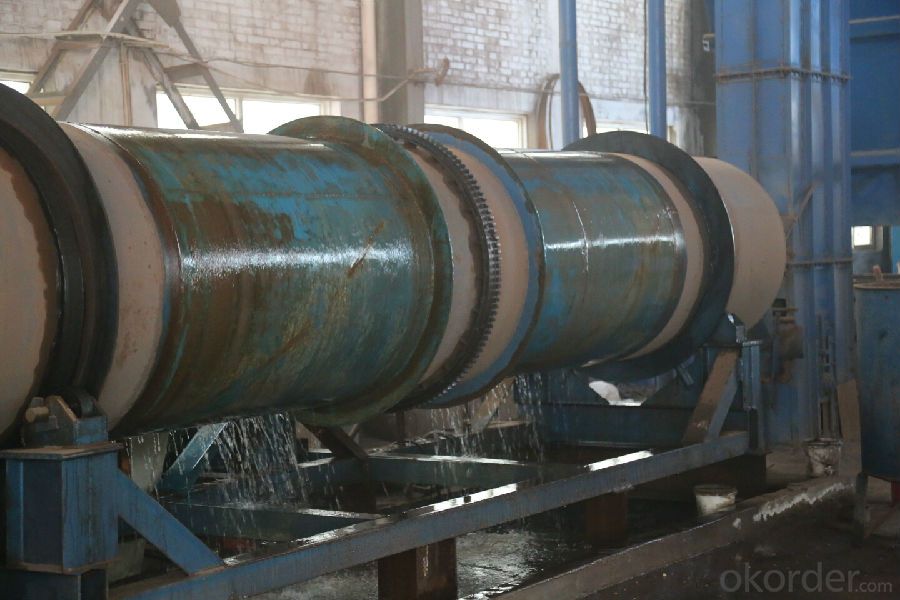
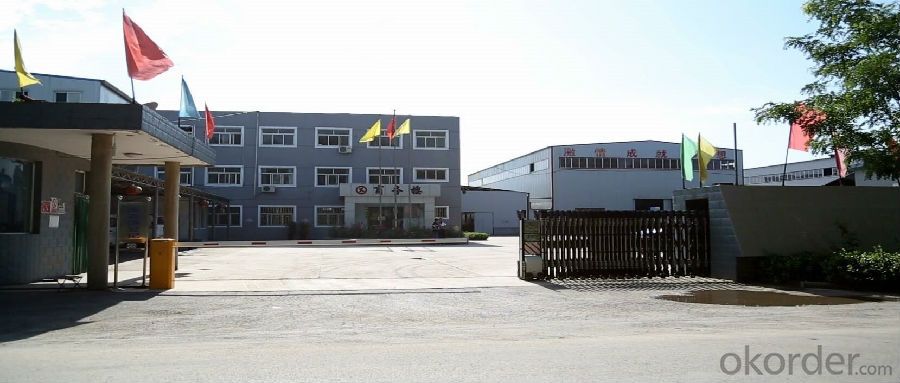
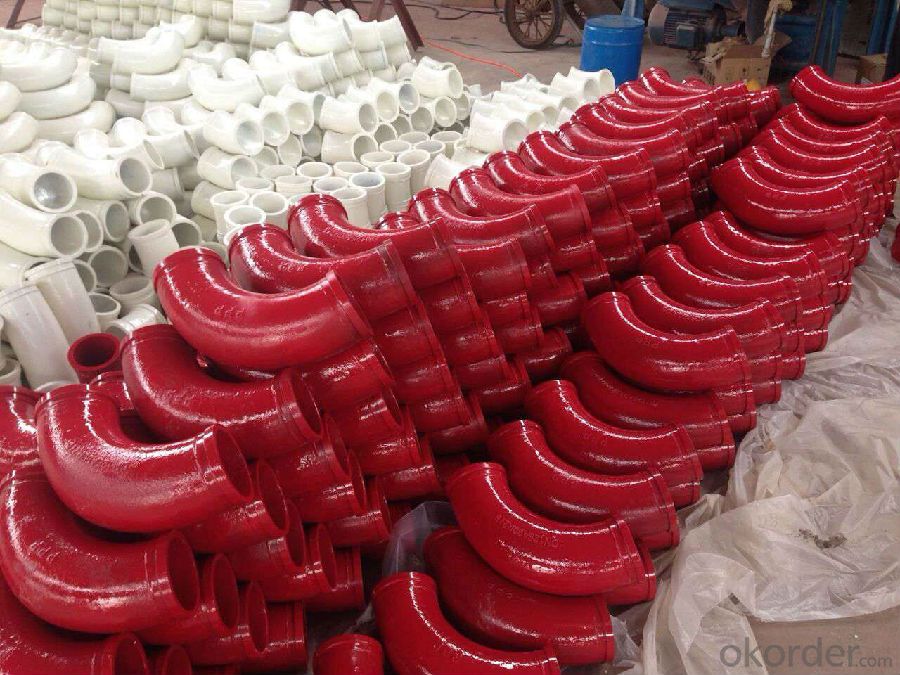
- Q: How can a malfunctioning remote control affect the pumping operation?
- A malfunctioning remote control can disrupt the pumping operation by causing delays or errors in controlling the pump's functions remotely. This can result in inefficiencies, decreased productivity, and potential damage to the pump or the system it operates within.
- Q: Can I get spare parts for both concrete pumps with and without emergency stop systems?
- Spare parts for both concrete pumps with and without emergency stop systems can be obtained. A wide range of compatible spare parts are offered by most concrete pump manufacturers and suppliers. These spare parts consist of hoses, pipes, valves, seals, and other essential components that may require replacement due to wear and tear or damage. Regardless of whether your concrete pump is equipped with an emergency stop system or not, you should be able to find the necessary spare parts to maintain smooth operation. However, it is important to note that the availability of specific spare parts may vary depending on the brand, model, and age of your concrete pump. To ensure that you obtain the correct spare parts, it is advisable to consult the manufacturer or supplier of your concrete pump. They can provide you with a comprehensive list of spare parts and help you select the appropriate ones for your specific pump. Additionally, they may also offer technical support and troubleshooting assistance for any issues related to your concrete pump.
- Q: How can a faulty hydraulic filter affect the pump's hydraulic system?
- The pump's hydraulic system can experience several negative effects when a hydraulic filter is faulty. The main purpose of a hydraulic filter is to eliminate contaminants like dirt, debris, and other particles from the hydraulic fluid, guaranteeing that the fluid is pure and free from impurities. When the filter is faulty or blocked, it fails to effectively filter the fluid, resulting in various issues. To begin with, the presence of contaminants in the hydraulic fluid can lead to heightened wear and tear on the pump's components. The particles can cause abrasion and damage to the pump's moving parts, including the pistons, valves, and seals. This can lead to reduced efficiency and performance of the pump, as well as potential leaks or failures. Moreover, a faulty hydraulic filter can induce a decrease in the overall system pressure. As the contaminants accumulate in the fluid, they can hinder the flow of hydraulic fluid, creating increased resistance within the system. Consequently, this can cause a drop in pressure, resulting in reduced hydraulic power and slower operation of the pump. Additionally, a clogged filter can also result in increased heat generation within the hydraulic system. The presence of contaminants restricts the flow of fluid, causing the pump to work harder and generate more heat. This can lead to overheating of the hydraulic fluid, which can further damage the pump and other components of the system. Overheating can also cause the hydraulic fluid to deteriorate, reducing its lubricating properties and potentially causing additional wear and damage. In conclusion, a faulty hydraulic filter can impact the pump's hydraulic system by causing increased wear and tear on components, reduced system pressure, slower operation, increased heat generation, and potential fluid degradation. It is crucial to regularly maintain the hydraulic system, including timely replacement of hydraulic filters, to ensure the efficient and reliable functioning of the pump.
- Q: What is the purpose of a concrete pump agitator motor?
- The objective of a concrete pump agitator motor is to guarantee the uniformity and excellence of the concrete mixture being transported. Its role involves ensuring that the concrete mixture remains well-blended and prevents any settling or separation during the pumping procedure. The agitator motor aids in maintaining a consistent and homogeneous mixture, which is essential for achieving sturdy and long-lasting concrete structures. Through continuous agitation of the concrete inside the pump, the motor assists in averting any obstruction or congestion that may potentially disrupt the pumping operation. In general, the purpose of a concrete pump agitator motor is to optimize the efficiency and effectiveness of the concrete pumping process, ultimately leading to improved construction outcomes.
- Q: What are the skills of concrete pump?
- According to the characteristics of the construction site and concrete pouring plan piping, piping design to check the level of the pipeline, conversion distance and the concrete pump pumping distance to adapt
- Q: How often should concrete pump remote controls be inspected and maintained?
- Concrete pump remote controls should be inspected and maintained on a regular basis to ensure their proper functioning and to prevent any potential issues. The frequency of inspections and maintenance will depend on various factors such as the intensity of use, environmental conditions, and the specific recommendations provided by the manufacturer. As a general guideline, it is recommended to inspect and maintain concrete pump remote controls at least once every three months. This includes checking for any visible damage, loose or worn-out parts, and ensuring that all buttons and switches are working properly. Additionally, it is important to inspect and clean the battery compartment, and replace batteries if necessary. However, in high-demand situations or extreme environmental conditions, more frequent inspections and maintenance may be required. For instance, if the concrete pump is used in a harsh environment with excessive dust or moisture, it may be necessary to increase the frequency of inspections and cleanings to prevent any potential damage or malfunction. It is also crucial to follow the manufacturer's guidelines and recommendations for maintenance. They may provide specific instructions on lubrication, calibration, or other maintenance procedures that should be performed at regular intervals. By adhering to these guidelines, concrete pump remote controls can be kept in optimal condition, ensuring safe and efficient operation.
- Q: How often should hydraulic accumulator bladders be inspected or replaced in a concrete pump?
- Hydraulic accumulator bladders in a concrete pump should be inspected regularly, ideally every 6-12 months, to ensure they are in good condition and functioning properly. However, the frequency of replacement depends on various factors such as the pump's usage, operating conditions, and manufacturer's recommendations. It is best to consult the concrete pump's manual or reach out to the manufacturer for specific guidance on when to replace the bladders.
- Q: How often should hopper pins be inspected or replaced in a concrete pump?
- Hopper pins in a concrete pump should be inspected regularly, preferably before each use, to ensure they are in proper working condition. The frequency of replacement will depend on various factors such as the quality of the pins, the intensity of use, and the maintenance practices employed. However, it is recommended to replace hopper pins as soon as any signs of wear, damage, or weakening are detected to prevent potential accidents or malfunctions.
- Q: Can I get spare parts for both piston and rotary concrete pumps?
- Certainly! Spare parts for both piston and rotary concrete pumps are readily available. Numerous manufacturers and suppliers offer an extensive selection of spare parts for these pump variants. These components encompass pistons, seals, valves, wear plates, hydraulic parts, and bearings, among others. To guarantee quality and compatibility with your specific pump model, it is essential to procure genuine spare parts from reputable suppliers. Moreover, it is advisable to establish a regular maintenance and inspection routine for your concrete pump. This will help identify worn-out parts promptly and replace them in a timely manner, thereby preventing any potential breakdowns or interruptions in your construction projects.
- Q: How long does it take to replace a specific concrete pump spare part?
- The duration required to replace a specific spare part for a concrete pump can vary based on several factors. Initially, the replacement time will be influenced by the complexity and size of the part. Smaller and simpler parts can be swapped out relatively quickly, whereas larger and more intricate components may necessitate a lengthier process. Additionally, the availability of the spare part is a crucial consideration. If the part is readily accessible and in stock, the replacement procedure can be expedited. Conversely, if the part must be ordered or obtained from a supplier, there may be a delay in receiving it, thereby extending the overall replacement time. Moreover, the competence and experience of the individual or team carrying out the replacement will also impact the duration. Trained and skilled professionals are likely to complete the replacement more efficiently compared to those with limited knowledge or experience. Lastly, unforeseen complications or issues that arise during the replacement process can also affect the time required. It is possible that additional repairs or adjustments may be necessary, which could further prolong the replacement time. In conclusion, the duration for replacing a specific spare part for a concrete pump is dependent on the part's complexity and size, its availability, the expertise of the individuals performing the replacement, and any unforeseen complications that may arise. Therefore, it is challenging to provide an exact timeframe without taking these factors into consideration.
Send your message to us
CONCRETE DELIVERY ELBOW PM TYPE 20DEG R275 DN125
- Loading Port:
- Tianjin
- Payment Terms:
- TT OR LC
- Min Order Qty:
- 100 pc
- Supply Capability:
- 10000 pc/month
OKorder Service Pledge
OKorder Financial Service
Similar products
Hot products
Hot Searches
Related keywords

